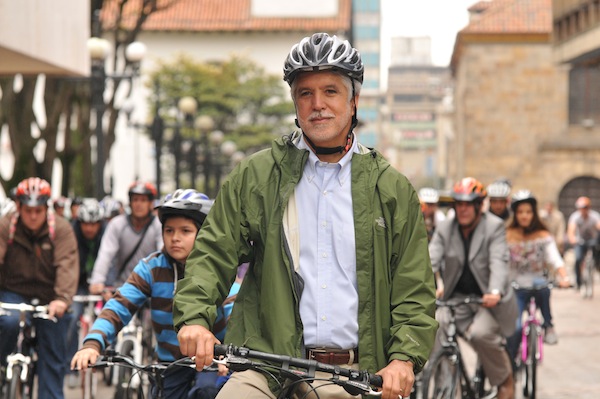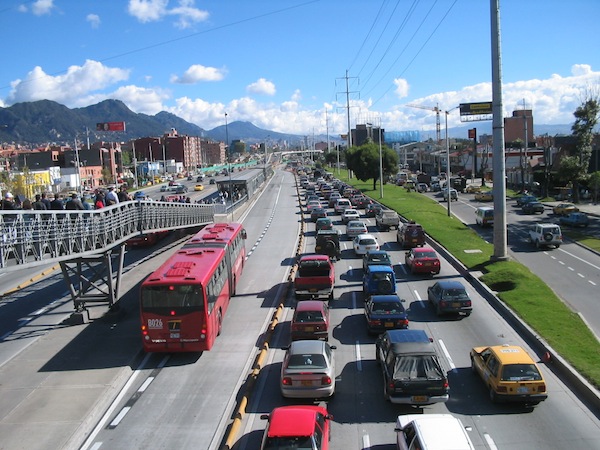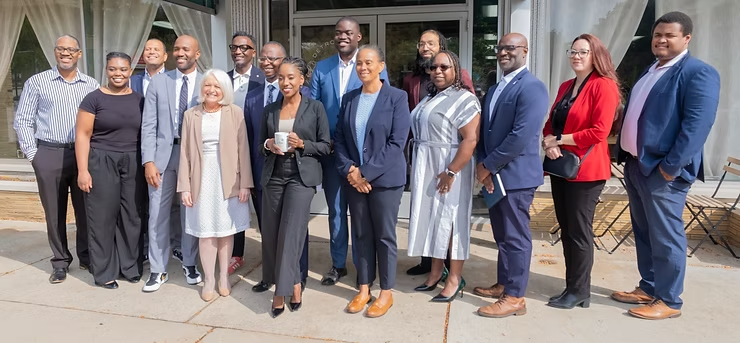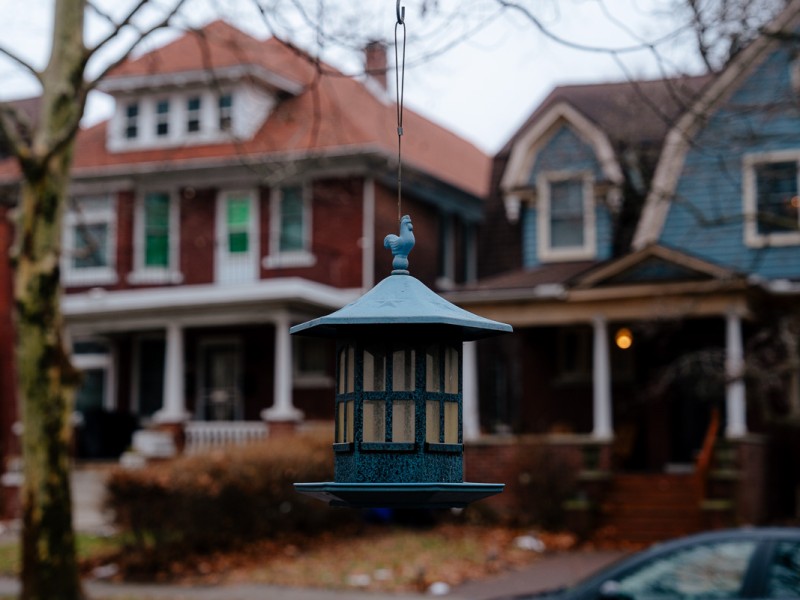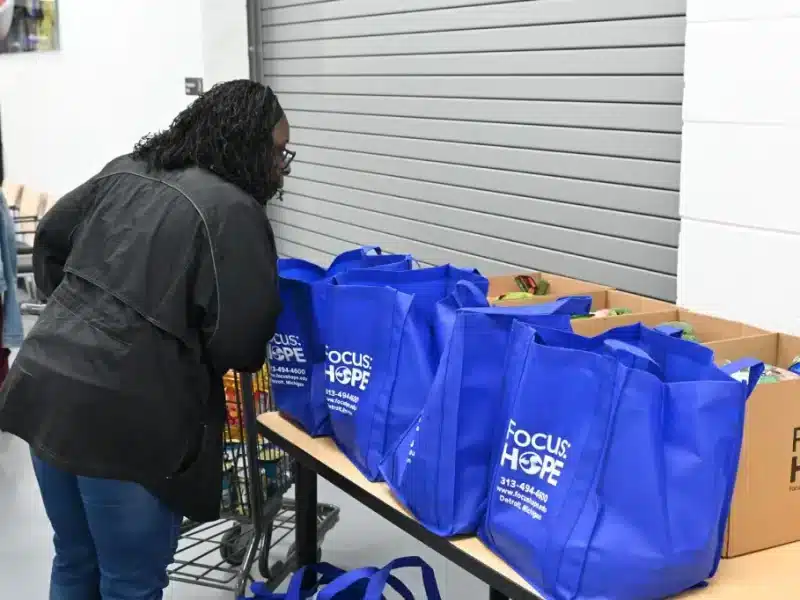Leading with vision: A conversation with transit innovator Enrique Penalosa
Few topics in Detroit resonate historically like transportation. In particular, the current debate about Woodward Light Rail (scaled down but still alive) and a proposed rapid bus transit system. Francis Grunow tracks down visionary change-maker Enrique Penalosa for insight and guidance.
“Leadership is the capacity to translate vision into reality,” says scholar Warren Bennis. This year, Model D broadens its horizons to explore how visionary urban leadership across the country and around the world can have a positive impact on cities. With all conversations steered back to Detroit, of course.
In the first of a series of interviews with mayors and other leaders who have made transformative change, we talk to Enrique Penalosa, mayor of Bogota, Colombia from 1998 to 2001.
The Penalosa administration spearheaded a number of bold initiatives, including the development of the TransMilenio, a citywide bus rapid transit system (BRT), as well as a wide-ranging network of bikeways. After a decade, TransMilenio is widely regarded a success, moving over 1.6 million riders a day, eclipsing most rail systems around the world. It carries more than twice the riders as Chicago’s El or the D.C. Metro. And Penalosa’s bikeways provide thousands of new cyclists a healthy and safe way to navigate Bogota.
Since leaving office, Mayor Penalosa has worked to promote sustainable urbanism not only in Bogota, but in cities throughout the world. He was a visiting scholar at New York University and currently serves as the President of the Institute for Transportation and Development Policy (ITDP), a non-government organization that works with cities to bring about sustainable transport solutions. You may have seen him in the documentary Urbanized, which also prominently features Detroit. Without asking Mayor Penalosa to offer Detroit a prescription, we spoke at length about how his ideas for cities have been implemented, including his views on light rail, BRT and bicycles.
Reading about Penalosa got us thinking: With Detroit’s historic struggle to build an integrated transit system, and our current debate about the fundability of the Woodward Light Project versus the value of BRT, what might we learn from his experience?
So we called him in New York, and he was gracious to answer our questions. As we suspected, Penalosa’s commitment to building and operating the best system possible, even with limited resources, offers a valuable lesson in leadership.
Our conversation follows:
For those who may be unfamiliar with your story, let’s start from the beginning. After growing up in Bogota, you lived in Washington, D.C., studied economics at Duke University, and then went to Paris for graduate work. What about those experiences did you take back to Bogota to begin your political career?
From a very early age, I was aware of the relationship between equality and land use. My father was the head of the Colombian Institute for Agrarian Reform, which sought to address disparity between large rural land owners and the rural poor. In 1976, I went to Vancouver to the United Nations Conference on Human Settlements accompanying my father, who served as the Secretary General. This conference was a turning point for me, personally, in terms of how I thought about cities, and how what we did with them made them work for people, or not.
During graduate school in Paris I was so impressed with how quality public space could create equality for people and how that was linked to a sense of happiness. I was a very poor student and worked for 10-12 hours a day as a doorman at a hotel. Despite this, with minimal cost, I had access to culture, street life, libraries, parks and all the wonder of Paris. I could meaningfully participate in Parisian life. It made me happy. It became very clear to me that if a city is done well, equality and happiness follow.
How did you come to have such strong passions about improving city life in Bogota?
I always knew I would come back to try to make a difference in Colombia. From the time I was a child to today, the population of Bogota has exploded, from 600,000 to over six million people. I realized that the earlier we make the right choices about land use, the better off we are in the long run, and the happier people would be, potentially for hundreds of years.
The world has determined that private property and the market is generally the best way to manage resources. So if some level of income inequality is going to be expressed in society, then what is government’s role if it is society’s ideal to promote equality? What kind of equality can you have?
What I would propose is that there are at least two kinds of equality that every society should strive to provide for its citizens. First, that all children have access to nurseries, food, music, art, and green spaces. This ensures that we all start off on the same footing and are nourishing the same potential.
Second, I believe that the first article in every constitution should read “all citizens are equal before the law.” What those words ensure is that the public good can prevail over private interest. In cities, this can be expressed in how we get around. For example, one bus full of people has fifty times more right to the road as one car.
You are widely known as an ardent advocate for alternative modes of transportation in Bogota. Why is this so important?
For some reason, transportation is linked to social status. If you blindfold someone, and put them in a $500,000 car and then a $50,000 car, they wouldn’t be able to tell the difference. But people will pay a lot more to have the super fancy car, because it is sexier. Same with rail. In Australia I think there is an ad campaign that says, “Men don’t take buses, they take trains.”
Along these lines, it is interesting to point out that in the 1940s, all cities had trams, or streetcars as you call them. While it is true that GM had a role in the dismantling of streetcars, the truth is that streetcars had a bad image at that time. They were perceived to be old and inferior while buses were modern and cool. Now exactly the opposite is true. Things change.
Now everyone has cars and many people seem to think that light rail is the answer to save our cities in terms of transportation. But I don’t think that is true. The correct distinction is between what is a good transit system and a bad transit system, not necessarily the merits of rail vs. bus. It is hard to do a bad quality rail system because the costs for entry are so high. But it is much easier to do a bad bus system because you can get away with cutting costs.
People must understand: that doesn’t mean that buses are bad. In my mind, buses are the most efficient way to use very limited resources. But they have to be done right.
Bikes are also part of the solution. The Danish architect Jan Gehl asks, “What makes a good city?” He says that good cities are the ones where people want to be outside, where people want to be in the public realm. It doesn’t matter if a place is hot or cold, humans have a need to be with each other, to meet and see and interact with other people.
The way we do that is by walking. Deer need to run. Fish need to swim. We need to walk. And I see biking as a more efficient way to walk. It is sensual, like gliding. It is fun. And for me, and most important, it is extremely democratic. A rich and a poor person can meet on the street on a bike, and the poor person doesn’t feel inferior.
When I proposed to construct bikeways in Bogota in 1998, nobody else in the world was doing it and everybody thought I was crazy. Now, cities everywhere are doing bikeways. I decided that it was one of the most important things to do to improve equality because bikeways protected and raised the social status of the cyclist.
Before, it was a stigma to ride a bike. Now, there are some parts of Bogota where it is much faster to get from one place to another by bike than any other mode of transport. It is the preferred mode.
As mayor, I could see this transformation, and it was made all the more clear when I rode my bike. I loved to connect with people this way and experience Bogota by bike. Bicycles give people a freedom of movement, a sense of equality. And while I was mayor it allowed folks to see their mayor as one of them.
What about displacing all those poor parked cars?
I always find these questions humorous. People are so worried about parking, but it is really the very last thing we should worry about in terms of making good cities. As far as I know, all of those rules about parking being tied to development are not based on any vote by citizens. I know of no place where parking is a constitutional right.
So as a resident of the Motor City, I feel compelled to ask: Do you hate cars? Do you even have a car?
No! I do not hate cars! I actually own an SUV. There are wonderful places to go with cars that are only accessible by car. I love to travel through the Colombian countryside. When I was student in the U.S., one of my best memories was buying an old Ford Mustang for $100 and going to junkyards to find parts to make it run. I took that Mustang on an amazing trip through the U.S. and Canada.
So how do you strike a balance?
It is about integrating the values of society. Cities do that best. Think about it: in cities, your most valuable resources are roads because they are literally the paths of connection between each of us. How do you construct roads in a way to maximize the values of society? How do you best distribute this resource?
I believe it is not a technical question, but a political one. So if you believe that society should strive to promote equality and happiness, you push to make your roads integrated and humane, from space for walking to space for cars and transit. And in my mind, the most advanced cities are the ones with the best quality sidewalks.
Cities can reflect the values of a society, but at the same time they must construct them. We should take our cue from cathedrals in this sense. These great edifices are beautiful to behold, but at the same time they promote the values of the church by their very presence.
Think about it on another level: When you see planet Earth from space, it is so beautiful and so obviously a fragile spaceship for all humanity. We are traveling companions and we don’t know where we are going. So you would think that we’d be okay with each other. But once we come down here, you find out we tend to hate each other.
The only place you have a right to be is your own country. And in most countries, land is privately owned. In fact, if you go into someone else’s home, the owner can kill you if you are perceived to be a threat. Roads are equally hazardous — as a pedestrian, you wouldn’t last very long on most roads without being killed.
So where can you be safe and happy? The answer is the public realm, and really only a microscopic part of our world is available for people in this way. So my perspective is that society has a very serious responsibility to make its roads, sidewalks, parks and plazas as good as they can be.
Back to TransMilenio. Why was a bus rapid transit system so important? How is it faring?
Okay, why buses and not trains? Well, you can compare buses with trains in a number of different ways. You can compare the cost to construct. You can compare the cost to operate. You can compare capacity cost. You can compare comfort.
But for me, it was an easy decision in terms of Bogota. When I came to office, Bogota was a poor city of about 6.5 million people and growing very fast. Only fifteen percent of households had cars, but that figure was growing. These were the powerful people of society. It may not seem like much, but traffic jams were getting worse and worse as Bogota grew and became more economically developed.
It’s funny, most problems get solved as a society gets richer. But transportation issues often get worse.
Many people pointed to Curitiba, in southern Brazil, whose mayor Jaime Lerner championed this type of system in the 1970s. So I had another model for reference and thought about the problem for many decades, publishing several articles on the issue in the 1980s.
In my mind, Bogota’s problems could not be solved with rail. The main problem was that it was too expensive, at about $200 million per kilometer, with an operational cost of about $2 per passenger.
Sure, subway and rail systems can be great, but speaking from my own experience, buses are not necessarily the best system, they are the only system. So we made TransMilenio the best system it could be and it is highly successful.
Also, we’ve had great success with increasing the value of land along TransMilenio corridors. Once the development community understood that this was the plan and what it would do, they responded with new development. For example, there was a recent series of magazine ads taken out by developers showing their properties on a TransMilenio map.
Also, keep in mind that 20 percent of TransMilenio users are car owners, which means that these are Bogota’s wealthier class. Do they use TransMilenio because it is cool and sexy? I’d like to think so, but probably not. Do they use it because they love the environment? Definitely not. They use it because it is faster and easier.
Yes, it is an educational process and there are carrots and sticks. But this system was something that we committed to making the best it could be. We improved public areas around the stations. We were mindful that the trip starts when you leave your home. It starts when you start walking. It has to be nice. And it has to work, with benches, lights, landscaping and by providing the fastest way to get from here to there.
Believe me, if Bogota can do it, any place can.
Recently you ran on a Green Party platform for mayor of Bogota again, after a ten-year hiatus. But you lost that race. With so much evidence mounting about the need for sustainable policy throughout the world, why is it a struggle to elect the politicians who espouse these ideas?
For many years, I have been a speaker for the green movement and how well-designed cities can provide human sustainability. As a world, we must develop places that are sustainable if we are to survive. But I began to care about the public realm and transportation not to be green, but to be efficient and egalitarian.
Of course we need more sustainable practices, but sometimes I think we lose sight of the bigger picture. As humans, we have a right to be on this planet, too. If we seek to create a human habitat that is better for human life, there is not a contradiction.
There is no doubt that we have to fight, but I’m not an environmental radical or sworn enemy of cars. In the end, it is about policy and we have to push ourselves to be better and counter our baser human impulses. We are social animals and we have the power to create spaces that meaningfully connect us to each other.
We should look to children, who I think are much smarter about this kind of thing. They much prefer to be in a public park over a private garden or yard. They want the freedom to interact and play with other children to share the experience and be part of the world.
It has been 50 years since Rachel Carson’s Silent Spring, but we’re still struggling. It’s frustrating, because we have a pretty clear idea of what kind of environment is needed for a happy gorilla or a contented whale, but it is much less clear that we are committed to creating the kind of environmental conditions that make for a happy child.
One last question: Will you consider running for mayor of Detroit in 2013?
(In true political fashion, Mr. Penalosa did not respond.)
Francis Grunow works on public policy issues with three other fine folks at New Solutions Group, a business in residence at the Green Garage in Midtown Detroit. He hopes to ride on a regional transit system before his AARP membership card arrives.
